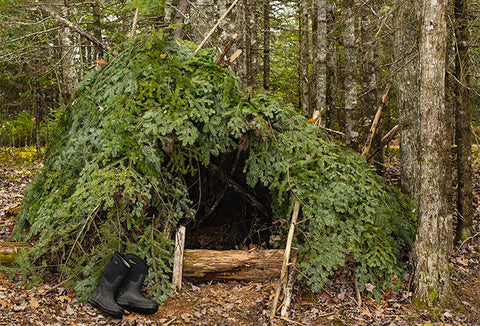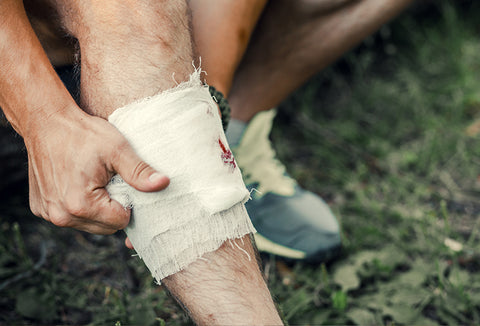
Advanced Bushcraft Knife Skills: Essential Techniques for Wilderness Survival
In the wilderness, where every element is a challenge and every challenge a test of will, your survival hinges on skill and the right tool—even if that tool is nothing but a knife.
If you want to call yourself a survivalist, here are the fundamentals you must know when it comes to knife skills:
Choosing the Right Knife
The first rule of survival? Choose your tools wisely. Your knife isn't just a tool, it's your partner.
Stainless Steel – Stainless steel is your go-to for corrosion resistance and ease of maintenance. Aim for a four- to six-inch blade. It’ll be versatile enough for detailed work, yet robust enough for tougher tasks.
Folding Configuration – Now, let's talk folding knives. They're not just a backup! The right folding knife, with a secure locking mechanism and ergonomic handle, can be invaluable. Consider features like a linear lock mechanism and a pocket clip for easy carrying.
Remember, the right knife feels right in your hand. It will be an extension of your will in the wild.

Shelter Building: The Art of Survival Architecture
UNDERSTANDING YOUR ENVIRONMENT
Assess Your Surroundings – Before building, observe your environment. Look for natural shelters like overhangs, which can provide a sound base. Avoid areas under lone trees to prevent lightning hazards.
Choose Safe Ground – Select a flat area to avoid water accumulation. Check for animal trails to avoid encounters with wildlife.
GATHERING MATERIALS
Select the Right Wood – Use your knife to test dead wood. It should be strong and not rotten. Avoid green wood as it's difficult to work with and doesn't provide good insulation.
Harvesting – Cut branches and logs using your knife, ensuring they are of uniform length for easy construction. Your knife's sharpness is crucial here to make clean, efficient cuts.
CONSTRUCTING THE SHELTER
Framework – Create a stable structure using interlocking branches. Use your knife to carve notches that help branches sit securely together, crucial for the integrity and longevity of the shelter.
Insulation – Gather leaves, grass, or moss, using your knife to cut and shape these materials. Insulation is key for warmth and comfort, especially in cold environments and seasons.
FINISHING TOUCHES
Reinforcement – Continuously test and reinforce weak points in your shelter. Use your knife to trim or adjust components for a snug fit.
Camouflage – Use local materials to camouflage your shelter, making it blend with the surroundings. This is essential for staying hidden in a survival situation.
FIRE STARTING
Tinder Gathering – Use your knife to create fine wood shavings from dry wood. The finer the shavings, the easier it will be to ignite them.
Kindling – Collect small, dry twigs and branches. Your knife can be used to split larger pieces into smaller, more manageable kindling.

Navigation and Mapping: Precision Knife Skills in the Great Outdoors
In the wilderness, the ability to navigate and map your surroundings is as critical as finding shelter or starting a fire. Here’s how to utilize your bushcraft knife for navigation and mapping:
MARK TRAILS AND WAYPOINTS
Blazing Paths – Use your knife to make small, ethical marks on trees to blaze a trail for your return journey or to assist rescuers.
Creating Directional Arrows – Carve arrows on the ground or on exposed wood to direct your path or signal others.
CRAFT MAKESHIFT TOOLS
Improvised Compass – Carve a shallow bowl in a piece of wood, fill it with water, and magnetize a needle with your knife’s steel to create a basic compass.
Sundial – Use your knife to etch a sundial into the ground, using a straight stick as the gnomon to tell time and direction.
ETCH MAPS
Recording Landmarks – Scratch a basic map into a flat piece of wood or bark, noting landmarks, water sources, and camp location.
Terrain Modeling – Carve small notches to represent hills or valleys, giving a 3D aspect to your map for better visualization.
MEASURE PRECISELY
Step Measurement – Use your knife to cut notches at regular intervals on a stick to measure distance by pacing.
Shadow Casting – By measuring shadows cast by the stick at different times, calculate distance and height with basic trigonometry.
Using a Fire Starter
For outdoor fire starting, it’s ideal to have a ferro rod or plasma lighter.
However, in the absence of either of these pieces of equipment, a knife will suffice. That is, if you know how to use it.
Technique – Hold your knife at a 45-degree angle against an InstaFire Fire Starter Pouch. Ensure your knife is sharp for efficient striking.
Sparking – Strike the knife firmly to create sparks. The durability and sharpness of your knife play a vital role in generating sufficient sparks.
MAINTAINING THE FIRE
Fuel Management – Gradually add larger pieces of wood, monitoring the fire's intensity. Use your knife to split wood into smaller, more combustible pieces.
Safety – Keep the fire controlled and manageable. Use your knife to clear an area around the fire to prevent accidental spreading.
EXTINGUISHING THE FIRE
Properly Douse – Thoroughly douse the fire with water. Use your knife to turn over ashes and ensure the fire is completely out.
Leave No Trace – Disperse the cooled ashes to minimize your environmental impact.

Creating Bandages and Splints
As safe as you might try to be, spend enough time in the wilderness and you will sustain an injury at some point. Your knife can help!
Cutting Cloth – Use your knife to cut clean cloth or clothing into strips for bandages. The sharpness and cleanliness of your knife will help you avoid infection.
Splints – Carve or cut branches to create splints. Your knife's precision is vital in shaping these to the right size and smoothness.
REMOVING SPLINTERS OR FOREIGN OBJECTS
Precision – Use the tip of your knife for delicate operations. Ensure the blade is finely honed for such tasks.
Sterilization – Sterilize the blade before any medical use to prevent infection. You can use flame or disinfectants if available.
EMERGENCY SITUATIONS
Signaling – Reflect sunlight off your knife blade as a distress signal. The blade's polish and angle are key to creating a visible signal.
Escape – In escape situations, a sharp knife can cut through ropes or barriers. A robust and reliable knife is essential for such scenarios.
KNIFE CARE FOR MEDICAL USE
Regular Cleaning – Keeping your knife clean is necessary for preventing infections, especially when used for first aid. Clean the blade with water and disinfectant whenever possible.
Storage – Store your knife in a dry and easily accessible place. A sheath is ideal for protection and quick access in emergencies.
RELATED READ: Blister Prevention and Remedies While on the Trail
Maintaining and Improving Your Skills
Practice Regularly – The more you use your knife, the more intuitive these skills will become. Regular practice in different environments enhances your adaptability and skill.
Learn From Experts – Engage with experienced bushcrafters or join wilderness survival courses to gain deeper insights and hands-on experience.
Adapt and Overcome – Each survival situation is unique. Be prepared to adapt your skills to the specific challenges you face.
With this practical knowledge, you're not merely facing the wild—you're commanding it. Preparedness is your edge. With these techniques, you're ready to meet any challenge nature throws your way.

John M. cheezum, jr
Very useful skills to be learned here. Thanks
Roni Addison
I found the survival material I read about a knife and its usefulness’s interesting and I was able to discuss these skills with my husband. We will practice some of the techniques in our backyard.